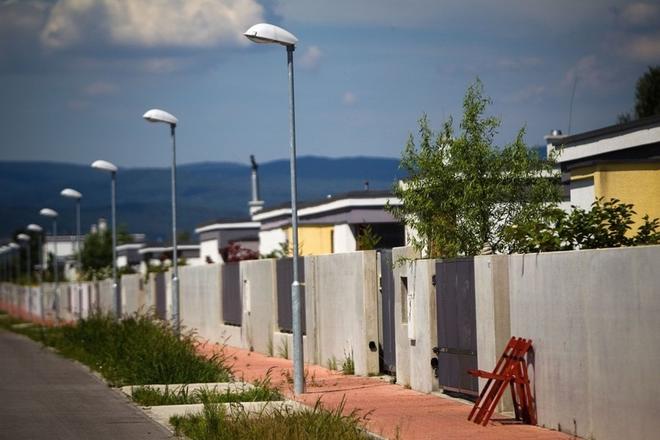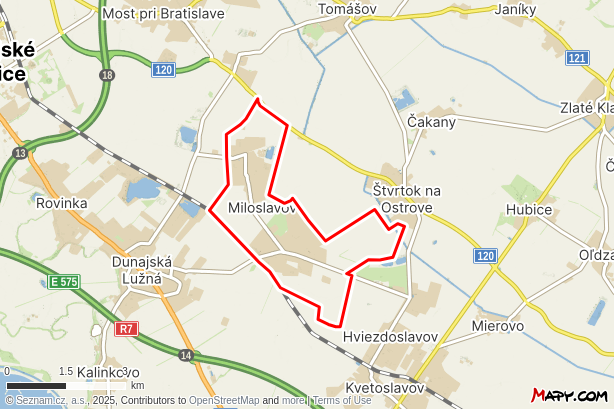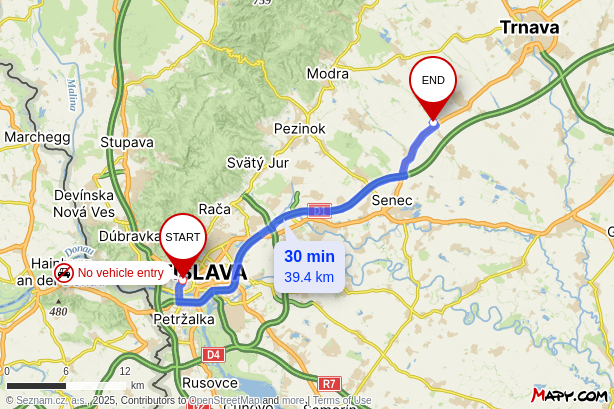Zuzana Žabková moved from Bratislava to Miloslavov three years ago. "I wouldn't do it now," she succinctly evaluates the decision she and her husband made based on real estate prices in Bratislava.
When they were deciding on whether to buy either a three-room flat or a house, they chose the latter. Location was irrelevant. Miloslavov, located 17 kilometres from the Bratislava centre, seemed close enough and within reach.
Soon after moving, she discovered that the only café was a 20-minute walk from her house, and there was nothing else in that part of Miloslavov. The only thing she could do in the area with her two-year-old daughter was to push her in a pushchair along the same streets again and again.
"In the summer, only one street is in the shade before noon, so all the mothers push their buggies there," she describes.
An estimated 100,000 people have moved to the Bratislava outskirts in recent decades. Some live in established villages and form vibrant communities. However, many of them, including Žabková, have come to new buildings constructed "in the fields" with minimal civic amenities.
They did not consider that the lack of access to basic services could further exacerbate the problems that mothers with young children face: limited mobility due to insufficient public transport, lack of social contacts, lack of cultural activities and burnout.
The Sme daily spoke to young women living in the Bratislava outskirts. All are mothers on maternity leave or have started working part-time; in their 20s and 30s; they moved there from the city. Some created a new home soon after moving and would not have it any other way. And if living in a satellite town complicates their lives, they overcome it with the knowledge that they are doing it for their children.
Others, on the contrary, due to the lack of amenities, began to consider moving back after some time.
"The mistake was that we didn't check in advance, but I didn't expect that it would be that bad when it came to amenities," says Žabková.

Why move to the outskirts?
Lucia Stano Šalátová and her family moved to the village of Kaplna from Bratislava's locality of Kramáre to be closer to nature.
"We have many outdoor hobbies. Nature, beekeeping, gardening, an environment for raising children,” she names the reasons for trading the city for a village about 35 kilometres away.
Statistically, the majority of people who buy real estate and also single-family houses in the outskirts are couples who are starting families. Several reasons, including cultural patterns, prompt them to buy a house, says geographer Pavel Šuška from the Institute of Geography of the Slovak Academy of Sciences, who studies Bratislava’s satellite towns in his research.
"Many people consider a single-family house with a garden to be the ideal environment for starting a family and raising children," he says. However, according to him, the main reason why people decide to buy one in the outskirts is the lack of housing in cities like Bratislava.
The experiences of women who spoke to the daily about their lives also confirm this.
"We wanted to have a house and a garden, which was not possible due to the prices in the capital," says Daniela Vagaská, who five years ago moved with her family to Chorvátsky Grob, a village about 20 kilometres from the Bratislava centre. Andrea Viszlayová also moved because of the real estate prices, and now lives with her family in Marianka, about the same distance away.

 Illustrative image. (source: SME)
Illustrative image. (source: SME)

